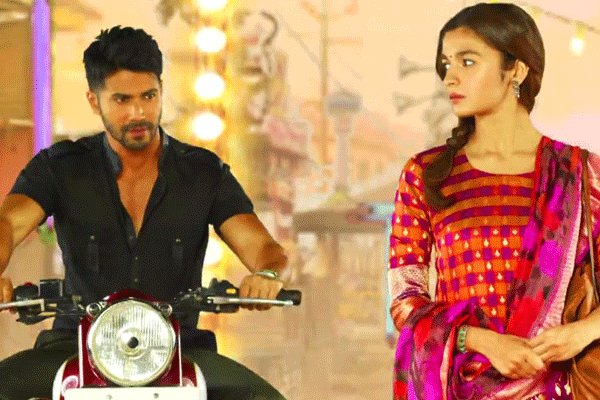
Watching a Hollywood film is usually done with absolute concentration and silence. However, the same cannot be said when watching a Bollywood film in India.
BY TATIRA ZWINOIRA RECENTLY IN NEW DELHI, INDIA

For the Bollywood-loving Indians, films to them are a culture with respect to dress, language, food, scenery, family, societal issues and marriage. As one Indian scholar put it, “for the audience in India, film is a religion”.
At the Nehru Place cinema in New Delhi, India, The Standard Style spoke to some of the cinema goers to find out what exactly Bollywood films mean to them.
An avid Bollywood film lover, Anoop Singh Bisht was at the cinema with his girlfriend waiting to go in and watch Hollywood’s Beauty and the Beast, which is currently ruling the roost on the international box office. As of last Wednesday, the film had a global haul of $910 million and will pass the special $1 billion mark in the next two weeks.
As such, Bisht explained to The Standard Stlye that the paper had caught him on an off day as he was taking his girlfriend out. To Bisht, Bollywood films are appealing to him due to the songs, scripting, musical scores and dances as it allows him to be more engaged.
“This is happening only in Bollywood and nowhere else out there. You do not watch the movie, you actually live the movie. People live Bollywood as well, so everything they show on the big screen they actually do in real life [minus the crazy stuff]. Also, there is this craze for the Bollywood star and Bollywood itself,” he said.
However, he said though newer Bollywood films were becoming more and more like Hollywood ones with the visual effects, action and hot women, was best.
- Chamisa under fire over US$120K donation
- Mavhunga puts DeMbare into Chibuku quarterfinals
- Pension funds bet on Cabora Bassa oilfields
- Councils defy govt fire tender directive
Keep Reading
“Bollywood is now somehow better than Hollywood and many films are made better than those from Hollywood,” Bisht said.
Hollywood influences include more Bollywood films being released showing physical intimacy between male and female actors. Traditionally, they would not show due to cultural taboos.
Another person who was hanging outside the cinema house but was not watching the film mentioned how Bollywood churns out more films than Hollywood and the world in general.
Rajeev Mehta, an aspiring filmmaker said watching films at the cinema was more than just what was on the screen but an experience too.
“They [Bollywood] make the largest amount of movies in the world. It depends upon the story and cast also. So like in the single screen cinemas, what they do is they gather all these party poppers and take inside the facility only and when the hero comes onscreen, they blow it up inside the movie. This can only be done in India,” he said.
Single screen cinemas are still quite popular in India compared to a multiplex cinema. The multiplex cinema is a movie theatre complex with multiple screens within a single complex, which are quite common worldwide.
Movie ticket prices range from 56 Indian rupees (86 cents) at low-end single screen theatres to about 250 rupees ($3,85) in high-end multiplexes.
Bollywood is the world’s largest film industry with an average of between 1 500 to 2 000 films being produced yearly in more than 20 languages, with Hindi being the most common. In 2016, though the exact figures are yet to be made public, it is estimated between 1 900 and 2 000 films were released.
All the Bollywood films in 2016 generated about $2,1 billion for the Indian economy, according to the 2016 Indian Film Industry Report.
Bollywood films are a mixture between the mainstream films and ones from the southern part of India which make up the larger portion. The cinema of the southern part of India comprises the Tamil, Telugu, Kannada, Malayalam, and Tulu film industries which operate as a single entity.
The main difference between the mainstream films and the ones from southern India is that the latter is more culturally centric then the former.
AJK Mass Communication Research Centre Jamia Millia Islamia institute professor Krishna Sankar Kusuma, who has extensive knowledge in script writing and the Bollywood film industry, said you can find many melodramatic films in Bollywood.
He said films were now being made not as an art but instead for the mass populous of the country.
“Dance has come very late to the cinema, which is why films without dance are very hard to sell. In fact, at any point in time in a film there could be three fights and six songs, which is a combination to a hit film. The songs will fill the imagination of an audience who come to entertain themselves or maybe forget their boredom for a while. For them it is kind of tourism,” he said.
“The success rate of films is more with the songs and dances because in Indian cinema the way it is understood is that the songs cannot be done away with. In India, we have a long folktale tradition where we are singing about the relationships, festivals, marriage, death or all these occasions and also adding value to the dramatisation of the situation.”
On such film which had dances and songs is the romance film Badrinath Ki Dulhania which is currently making waves in India. The story is about two people who fall in love but with opposing views on life. Watching the film from start to finish, the audience was highly engaged making noise at different plot beats in the film.
However, despite producing the most films in the world, India’s cinema earnings are lower than Hollywood’s. For example, Box Office Mojo a top international box office tracker, said Hollywood produced 725 films in 2016, which delivered over $11,3 billion in domestic revenue to the United States economy.
Part of the problem as another scholar at the same institute as Kusuma highlighted, was the coming in of the multiplex cinema. Shohini Gosh, who also has extensive knowledge in film, said the problem came with the advent of multiplex cinemas which led to lower revenues.
“I think one of the problems of the multiplexes is that it is a very elite space. The single screen cinema is now gone so the multiplexes are a far more expensive proposition, so the tickets are far more expensive than the single screen cinema. So, if one ticket costs 250 rupees [$3,85] then it is very difficult for somebody who doesn’t earn that much, or a person from the working class to take the entire family [average family size: between four and five] to watch a film,” she said.
“The traditional cinema goers who could afford maybe 40 or 50 rupees [61 or 77 cents] have vanished. The numbers of people seeing multiplex cinemas are probably lower and because the price of tickets is higher, a smaller number of people can recover costs for that film.”
However, she said due to the growth of technology, the film industry was generating a good profit as they do not have to rely on just box office takings as there are television rights, film rights, downloadable content and even piracy.
Yes, the love that Indians have for films continues to sustain the industry as witnessed at the Eros Hotel in the Nehru Place, New Delhi where this reporter was staying.
During the stay, one of India’s top actors Ayushman Khurrana was staying at the hotel where employees at the hotel and guests alike rushed for pictures with him.
The Standard Stlye reporter approached the actor who only referred the paper to his manager, but not before saying that “Bollywood cinema is good”.











